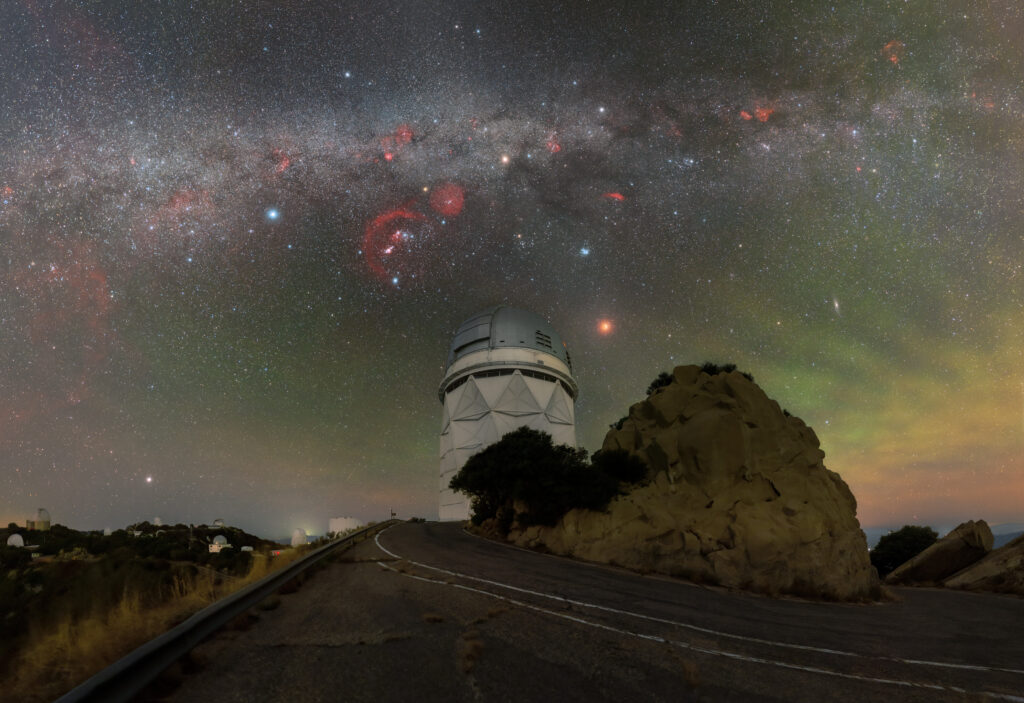…in Story and Science
Joan Najita, NOIRLab
April 4, 2023

One of the most spectacular things in the night sky is the Milky Way, which arches above the 4-meter Mayall Telescope in this image. The DESI survey is currently underway at the Mayall Telescope at Kitt Peak National Observatory, which is located in the Schuk Toak District of the Tohono O’odham Nation. Known as “tohmog” or “to:mog” in the language of the Tohono O’odham, the Milky Way looks like a pale band of bright specks entangled with dark clouds and glowing red wisps that shimmer like fireworks. In one Tohono O’odham story, the Milky Way was created when Coyote, the trickster, was playing in the kitchen and looking for something to eat. Hearing someone coming, he grabs a bag of flour and escapes into the sky in a great hurry. The bag tears open and flour spills out, creating the Milky Way.
There’s an echo of that story in how astronomers understand the Milky Way, just with the light and dark reversed. Here the bright white specks are not powdery flour, but stars in our galaxy. And a different kind of powdery substance, interstellar dust, creates the dark clouds, by scattering and absorbing the light from background stars. This dust isn’t the same stuff we sweep up from under our beds. Instead, it’s a kind of “soot” that forms in the atmospheres of some stars and is the stuff from which planets like Earth are made. It’s pretty valuable stuff—just like the flour that Coyote ran off with!
In this image, we can also see other interesting features. The familiar constellation of Orion the hunter is just above the Mayall Telescope to the left. And the glowing red fireworks spread across the sky are bright clouds of gas in the galaxy that are lit up by hot stars.